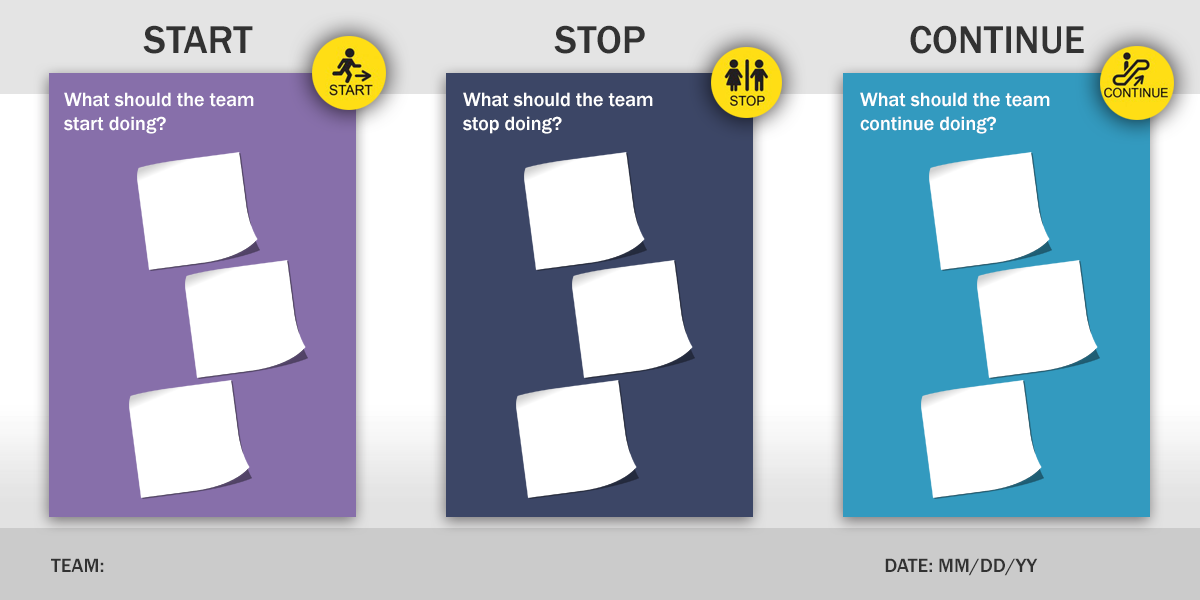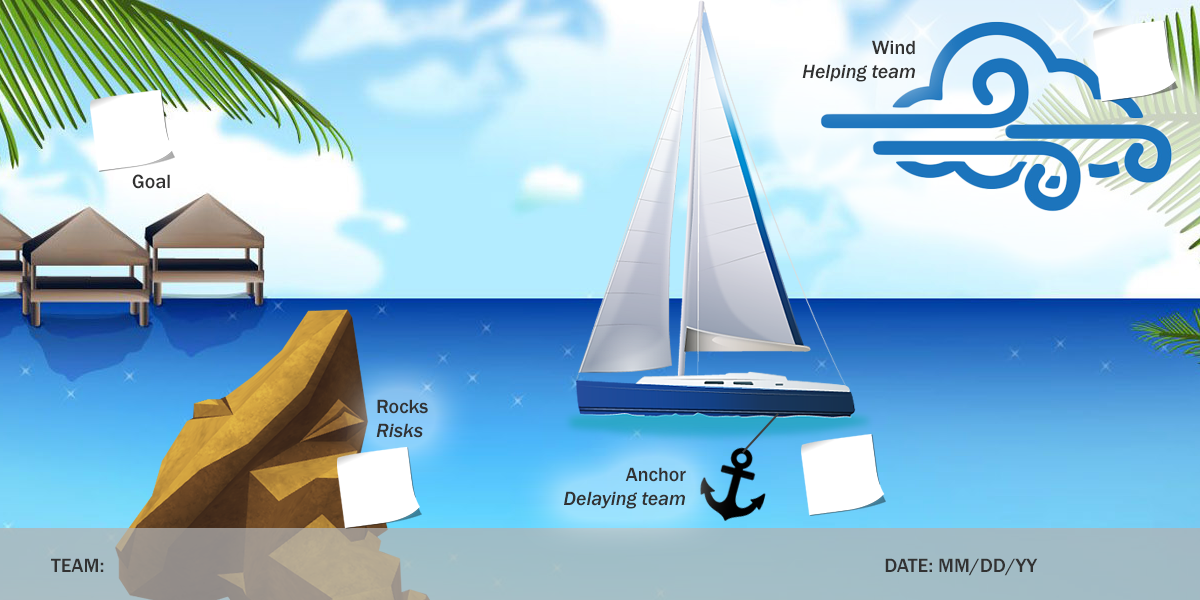6.5 Sprint Retrospective
As the last ceremony in the sprint, a sprint retrospective is held. This is where the development team inspects itself and makes a plan for improvement to implement in the upcoming sprint. The sprint retrospective meeting is at most 3-hour meeting for a 4-week-long sprint, and shorter if sprint is shorter. Again, the scrum master facilitates the meeting and makes sure the time-box is respected. The scrum master makes sure that everybody understands the purpose of the meeting.
The purpose of the sprint retrospective meeting is to find what activities and things the team is doing well, what activities should be continued, and what can be done to improve the next sprint to be more enjoyable and/ or productive. The «inspect and adapt» principles play a key role in a retrospective session for making the next sprint more enjoyable and productive.
Sometimes, a start, stop and continue board is used.

The “Start, Stop, Continue” method is about quick idea generation. Instead of listing all topics, grouping them, and then trying to take action on specific groups, this technique tries to identify actions straight away.
How to use it
- The team is shown a template separated into three columns with labels:
Start, Stop and Continue. - Reflect as a team on three things:
- What should the team start doing?
- What should the team stop doing?
- What should the team continue doing?
- Add your answers as digital sticky notes in the corresponding columns.
Other times, the scrum master uses different kinds of games to help the development team to find possible improvements within the scrum process framework, its development process, and practices to make it more effective and enjoyable for the next sprint. One example could be the Sailboat:

How to use it
- Show the team a picture of the sailboat in the ocean, propelled forward by the wind, held underwater by anchors, heading towards the island, and facing rocks.
- Explain, that, similarly, a sprint has factors that slow it down and speed it up. The islands in the picture are the goals the team is heading to the rocks are the risks they might face towards their vision.
- Write down what the team’s vision and goals are.
- Ask the team to record on sticky notes things that they felt helped the sprint move forward or slowed it down. Place the sticky notes either on the sail or below the boat, indicating that they are anchors or wind.
- Write down the ideas within the area of risks as well.
- Select a team member to group all the sticky notes on the board into similar categories.
- Get feedback from the rest of the team as to whether the grouping is fair, or if changes should be made.
- Have the team vote on what the team feels are the critical groups to focus on.
- Start root cause analysis and develop some outcomes.
In the next sprint, the development team will implement the improvement points they have found and listed; this is the adaption of the inspection of the development team itself. Improvement can, of course, be implemented at all times, but the retrospective meeting gives the development team a focused time-box to work on team and process improvements.
This is the end of the course International Scrum Master Foundation. Please, take the exam following the link:
https://www.scrum.as/certification.php
